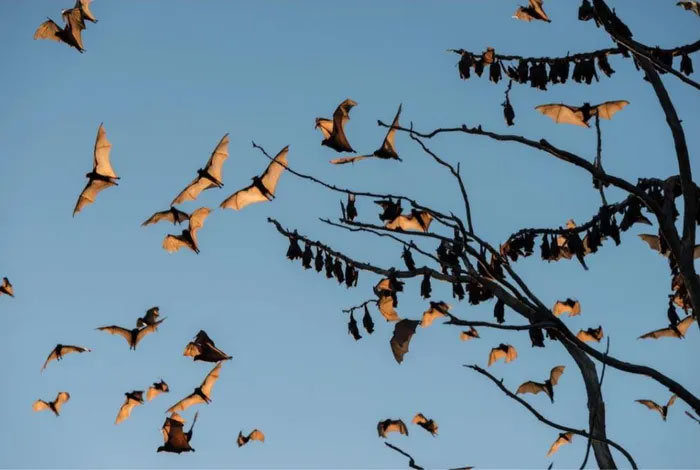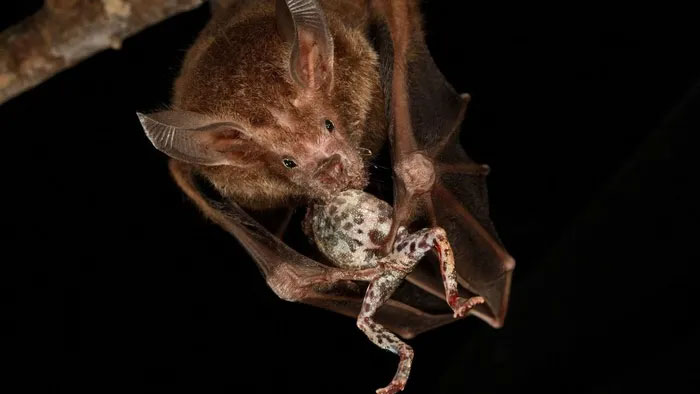Bats and Enviable Superpowers
Over 50 million years of evolution, bats have tackled a series of vital challenges, including developing an integrated sonar system to search for prey.

More than 1,400 species of bats live around the world, with the exception of Antarctica and a few remote islands.
"There's still a lot we don't know about bats, but they certainly have superpowers," said Mexican ecologist Rodrigo Medellín, emphasizing that bats are a model for us to lead a life. healthy and virile.
Superpower 1: Echolocation
Bats are not blind as many people think. Instead of relying on sight, they mainly use echolocation to move and forage in the dark.
Echolocation is the ability to perceive the environment by actively generating high-frequency sounds and listening for echoes from surrounding objects.
From this echo, bats can measure the distance, size and shape of objects, such as mosquitoes. Some species of bats are so capable of echolocation that they can detect an object as small as a hair or detect a difference in echo delay of less than 1 microsecond (millionth of a second).
Recent research shows that bats do not rely too much on echolocation as originally thought. According to expert Aaron Corcoran of the University of Colorado (USA), bats fly most of the time in silence, apparently to avoid being "eavesdropped" by other bats. When not echolocating, they turn to sight and memory to find their way.

Echolocation helps bats hunt in the dark. (
Superpower 2: Fly as fast as the wind
Bats are the only mammals that use their muscles to fly through a mechanism known as self-powered flight – a flight technique unique to the animal kingdom.
The bat wing resembles a modified human hand, with elongated "fingers" connected by a flexible membrane of skin. Supported by special muscle groups, the flexible wings are filled with blood vessels, nerves and tendons that help bats fly at incredible speeds.
Unlike the wings of birds or insects, the wings of bats can be folded during flight in many different shapes. Many people may be surprised to learn that the fastest self-sufficient flying animal on the planet is Tadarida brasiliensis (Mexican tailed bat), says ecologist Medellín.
In 2016, researchers in the state of Texas - USA, measured the flight speed of Tadarida brasiliensis and found that they can reach speeds of up to 160 km / h - faster than any mammal on Earth.
Superpower 3: Longevity
In the animal kingdom, smaller animals often have shorter life cycles than larger ones. Bats are an exception: They are the longest-living mammal in terms of body size.
The longest living bat species ever recorded is Myotis brandtii – a small Russian bat that weighs less than 7 g but lives for at least 41 years.

Bats are the longest living mammals in terms of body size.
Recently, scientists have studied the cells of bats to find out why they live so long. They focused on telomeres, protective structures found at the ends of chromosomes. In most animals, telomeres tend to shorten over time in a process that may be related to aging.
However, the telomeres in the oldest group of bats, Myotis, do not appear to shrink with age. Understanding why bats live so long and how they stay healthy into old age could one day help extend human lifespans.
Superpower 4: Anti-virus
Bats not only live long, but also maintain a healthy state throughout their life, with extremely low rates of cancer. And yet, bats can contract deadly viruses, including rabies and Ebola, without getting sick.

Bats can contract deadly viruses, including rabies and Ebola, without getting sick.
To solve this mystery, scientists studying the genes of bats and the process have revealed a few clues. A recent analysis of the genomes of six bat species has revealed a long-term "evolutionary arms race" between bats and viruses.
For example, genes involved in immunity and inflammation in bats change over time – most likely in response to viral infection. In the opposite direction, viruses have also evolved to find more effective ways of infection.

Research on bats could be the "key" to helping people live with the virus without getting sick.
Bats are suspected of being a "reservoir" of some dangerous viruses that can be transmitted to humans, such as Nipah. While some experts assert that the SARS-CoV-2 virus that causes Covid-19 disease originated in bats, many people believe that bats are not the culprit that transmits the disease directly.
Regardless, studying the unique immune system of bats could provide important data on how humans can live with the virus without getting sick.
Superpower 5: Ecosystem support
In addition to the special abilities mentioned above, bats can also support the ecosystem. 75% of bat species eat insects, and each night, each bat can eat as many insects as its body weight or more.
Many of these insects damage important agricultural crops, such as cotton. Scientists estimate insect-eating bats could save US farmers about $23 billion a year by reducing crop damage and reducing the need for pesticides.

Each night, bats can eat as many insects as their body weight or more.
Many species of bats also contribute to improved plant health and ecosystem diversity. At least 549 species of plants are pollinated or seed-dispersed by bats, including bananas, mangoes, guava, cacao and agave green cactus - an important ingredient for tequila production.
"Bats are unsung heroes that contribute to the protection of biodiversity. They play an important role in ensuring food, clothing and drink for humans. It's time we cherish them" - biologist Medellin's ergonomics confirmed.
- How do bats spread disease globally?
- 5 superhuman 'abilities' that you have never realized
- Discover new bats on dogs in Panama and Ecuador
- Terrible hot sun causes bats to fall like a fig in Australia
- Discover panda bat in South Sudan
- The owner cried when he discovered 1,700 bats crawling, occupying the balcony to ... 'pleasure'
- Discover 4 strange bat species
- New discoveries about bats: Male bats use food to propose
- Why do bat hang upside down when sleeping?
- Two-headed bat carcasses in Brazil shocked the experts
- The legend of bats 'vampires' eat raw Mayan flesh
- Discovered iridescent bats in Bolivia
 Animal 'suffering' after hibernation
Animal 'suffering' after hibernation Why do goats climb well?
Why do goats climb well? Scientists were surprised to see chimpanzees eating turtles
Scientists were surprised to see chimpanzees eating turtles Giant catfish died deadly due to drought in Thailand
Giant catfish died deadly due to drought in Thailand